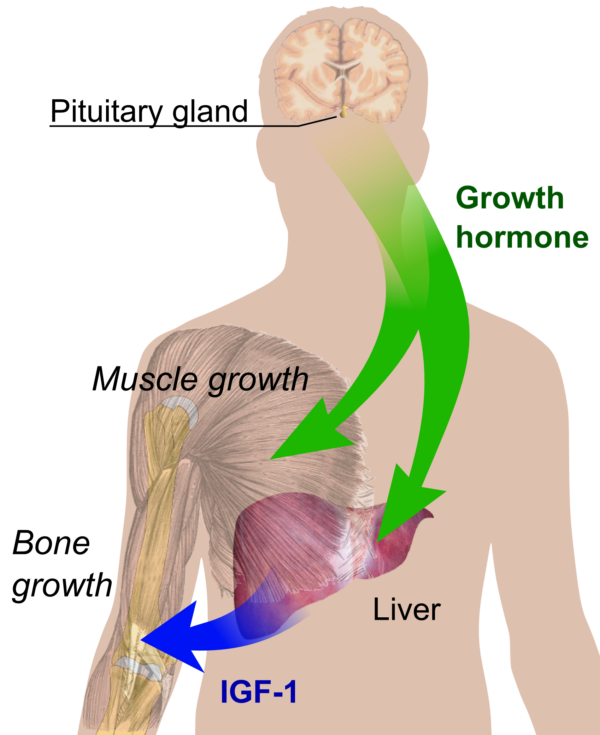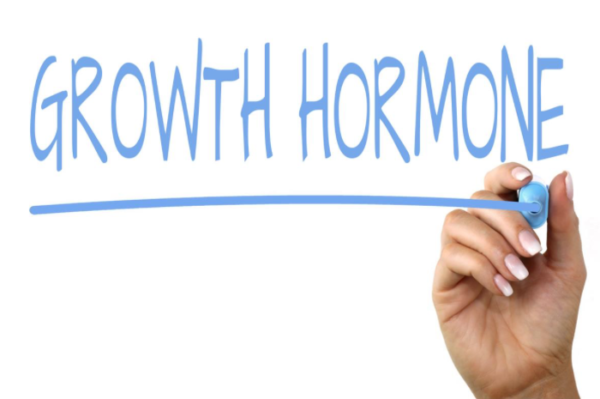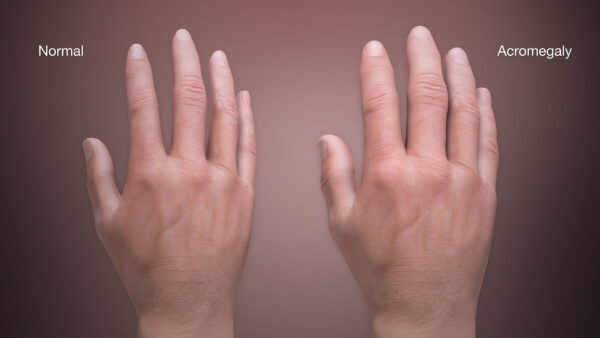You may come across the term “Growth hormone” more than once in your life but how much do you actually know about it? Surely growth hormone, as suggested by its name, plays an instrumental role in your height increase but in reality, there is more to this hormone than meets the eye. This article will explain in detail about the production, functions, and possible problems associated with growth hormone, thereby recommending effective ways to boost your growth hormone levels naturally.
What is growth hormone?
Growth hormone goes by many names – Somatotropin, human growth hormone, GH, or HGH. It is released into the bloodstream from the anterior pituitary gland along with other hormones that have different functions within our bodies.

As its name implies, growth hormone is active in various parts of the body to promote growth in children and teenagers. It will stop increasing height once the epiphyses or growth plates in the bones have fully fused, which is normally around the time a person reaches 18-25 years of age. Notwithstanding this, growth hormone helps to maintain normal metabolism and body structure in adults as well as keep blood glucose amounts within set levels.
How growth hormone is controlled
The release of growth hormone is not continuous; it is released in a number of pulses or “bursts” every three to five hours. Such a release is controlled by two other hormones: growth hormone-releasing hormone and somatostatin, both of which are produced by the hypothalamus (a part of the brain). The former stimulates the pituitary gland to release growth hormone whereas the latter inhibits that release [1].
Growth hormone levels can be raised by exercise, sleep, and low glucose levels in the blood. They peak during the time of puberty and tend to lower in pregnancy or when the brain senses high levels of insulin-like growth factors or growth hormone already in the blood.

Problems with too much or too little growth hormone
Not surprisingly, too much growth hormone results in too much growth. Increased growth hormone levels can, though very rarely, occur in children before they reach their final adult height. This would cause excessive growth of long bones, which makes the child abnormally tall. This phenomenon is more commonly known as gigantism. In adults, excessive growth hormone for a long period of time engenders a condition called acromegaly, in which the hands and feet of patients swell while some facial features are altered.

Other problems associated with this condition include organ enlargement and serious functional disorders such as diabetes, high blood pressure, and heart disease. The main culprit found in more than 99% of patients is benign tumors in the pituitary gland that trigger the overproduction of growth hormone. Affected individuals, however, do not get any taller as this condition is more common after middle-age when the growth plates have completely closed.
On the contrary, a deficiency in growth hormone leads to poor growth in children and teenagers. In adults, it results in a reduced sense of wellbeing, increased risk of heart disease, increased fat, weak heart, bones, and muscles. This condition may be present from birth due to genetic or non-genetic factors such as injury to the pituitary gland during fetus development or at birth.
Growth hormone deficiency can also develop in adults owing to a pituitary tumor, brain injury, or damage to the pituitary gland after radiotherapy for cancer treatment or brain surgery. Injections are used as the main treatment to replace growth hormone, either once a day or several times a week. Yet, it should be noted that taking growth hormone as an adult will not result in increased height.
5 excellent ways boost growth hormone naturally
Given the importance of growth hormone to your body, it is advisable to pay attention to your growth hormone levels throughout your life, especially before you reach your final adult height. Besides, if you want to achieve your desired height and avoid poor growth due to growth hormone deficiency, check out these awesome tips to boost your growth hormone naturally.
Eat well
The first step to boost growth hormone naturally lies in your diet. As discussed above, obesity and high insulin levels have negative effects on the release of growth hormone. Hence, to optimize growth hormone production, try to reduce the sugar intake from your diet. Specifically, avoid refined carbohydrates and sugar from foods such as white rice, white bread, sweets, added sugars, etc. as they cause excessive amounts of insulin.
In addition, the schedule of your diet is also worth your attention. Many people unknowingly increase their insulin levels and inhibit the secretion of growth hormone from the pituitary gland because of their habit of having late dinners. With this in mind, make sure that you finish your dinners early and go to bed at least 3 hours later for your body to normalize insulin levels and maximize growth hormone secretion.
Furthermore, eating the right foods can help you increase your growth hormone levels effectively and naturally. Some foods that can be served as growth hormone boosters include:
- Coconut oil
- Pineapple
- Salmon
- Fava beans.
Sleep properly
It is no surprise that sleep once again makes it to the list of growth boosters. In fact, sufficient sleep is imperative for growth hormone production because the pituitary gland releases growth hormone at peak levels during the sleep hours before midnight and early in the morning. Growth hormone will then reach out to all important parts of the body and trigger the growth process.
In today’s busy world, it is easy to let life drag you along with different personal and professional responsibilities, which leaves you with less and less time for yourself and makes sleep seem a luxury. But bear in mind that proper sleep is a natural growth booster, and for those who want to build up growth hormone production, try to have around 8 hours of sleep every day.
Below are some tips for a good night’s sleep:
- Go to bed early and manage to sleep before 11:00 p.m.
- Sleep in the dark.
- Pay attention to your room temperature and space.
- Do not consume caffeine in the evening.
- Avoid using digital devices before sleeping.
Exercise regularly
Regular exercise is another effective growth hormone booster that you can easily practice at home. Such activities as jogging, running, cycling, and swimming are all excellent choices to add to your exercise routine. Also, do not forget to drink a lot of water to keep your body hydrated while doing exercise and sports in order to prevent any adverse effects on your health and the release of growth hormone.

Enjoy a sauna or a hot bath sometimes
This is probably the most relaxing method to boost growth hormone naturally. By bringing yourself to enjoy a hot bath or a sauna, your body can be relaxed and intensify its growth hormone production, depending on the time and temperature. Be careful with dehydration and heatstroke, however. For optimal results, you should spend from 15 to 20 minutes in the sauna a few times a week to facilitate more growth hormone production.

Laugh more
The last growth hormone booster is undoubtedly the easiest one. Bizarre as it might sound, the great effect of laughter should not be taken lightly. Mirthful laughter is found to be a significant growth hormone booster. Frequent laughing can reduce stress, keep away anxiety, and relax your whole body. This easy yet powerful therapy triggers your body to produce more dopamine, which in turn stimulates the pituitary gland to secrete more growth hormone naturally.

The vital importance of growth hormone to your body is undeniable whether you are at the age where you can still increase height naturally or not. Usually, people stop growing taller after puberty but be that as it may, growth hormone maintains your body structure and stabilizes metabolism. Following the above-discussed tips will help boost its production, improve your overall health, and if you are still in puberty, you can optimize your height potential as well.
[1] https://www.yourhormones.info/hormones/growth-hormone/